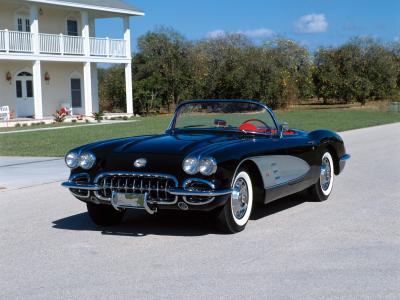
Cylinder head science takes minutes to learn, a lifetime to master. Milling for increased compression may be an old trick, but even in today's computer-controlled-everything world it remains a relevant and even crucial one to some. The traditional small-block Chevy head, as well-known as it is, still holds a few surprises and additional power for those willing to grind some metal and unlock its secrets.
Flat milling is the most common of milling procedures, and involves passing a rotating cutter head over the surface of the head deck to get it completely flat and smooth. A smooth, flat mating surface seals better, which is why resurfacing should be part of any quality rebuild. Removing a bit of extra material -- upwards of 0.60-inch for most small-block iron heads -- will also reduce combustion chamber size, which means a bump in compression and a concordant increase in power. Bear in mind, though, that head milling moves the heads' bolt holes closer together, and that means also machining the intake manifold you want to bolt onto the engine.
Milling cylinder heads is now and has always been the equivalent of major automotive surgery, and it's going to change things in your motor. First, it makes the head deck a bit thinner, which makes it weaker and more prone to cracking, particularly in between the cylinders on siamese-bore blocks. Milling also decreases piston-to-valve clearance by the amount that you've milled the heads, which can be a problem for those running big, long-duration cams. That means you may need to use a smaller cam or cut valve reliefs in the pistons; both of which will hurt horsepower and the latter of which will add volume back into the combustion chamber and offset your milling job. Safe clearance limits are at least 0.80-inch for the exhaust and 0.100-inch for the intake.
Milling to increase compression ratio is one of the oldest hot-rodding tricks in the book, primarily because it's free if you happen to own a mill. To determine the compression ratio increase, you need only know the engine stroke, the old compression ratio and the new one. The formula looks like this: Stroke x ( (1 / Original CR - 1) - (1 / New CR - 1)). So, you can expect a one-point increase (from 9.00 to 10.00) with an 0.39-inch mill on a 350, a 0.36-inch mill on a 327 and a 0.042-inch mill on a 383 or 400. Generally speaking, a one-point increase in compression is worth between 3 and 4 percent more horsepower and torque.
You've got a few alternatives to milling the heads for an increase in compression, most of which you can combine with milling to get some extra compression without taking too much off the heads. Milling the deck surface on the engine block or using a thinner head gasket will accomplish the same thing; you can combine these strategies with milling for a significant compression increase if you've got some old, oddball engine that no one makes pistons for.
Angle-milling -- removing more material from the exhaust side of the head than the intake side -- is a popular option for those who're looking for no-compromise performance from a particular set of heads, as it puts the intake ports in a more upright position to enhance flow -- but it does require extra work. You'll need to re-drill the bolt holes and install larger bolts and enlarge the pushrod holes so the pushrods don't hit. Additionally, your existing intake manifold might not work at all, and even if it does it'll require additional machine work to get the bolt holes and ports to line up. Still, it's one more way to make additional horsepower if you're racing in a class that dictates that you use a particular type or brand of cylinder head and you've already built everything else on the engine to the hilt.